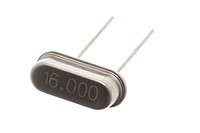
Photo from wikipedia
In this paper we discuss issues related to the theoretical as well as the computational format of gradient-extended crystal viscoplasticity. The so-called primal format uses the displacements, the slip of… Click to show full abstract
In this paper we discuss issues related to the theoretical as well as the computational format of gradient-extended crystal viscoplasticity. The so-called primal format uses the displacements, the slip of each slip system and the dissipative stresses as the primary unknown fields. An alternative format is coined the semi-dual format, which in addition includes energetic microstresses among the primary unknown fields. We compare the primal and semi-dual variational formats in terms of advantages and disadvantages from modeling as well as numerical viewpoints. Finally, we perform a series of representative numerical tests to investigate the rate of convergence with finite element mesh refinement. In particular, it is shown that the commonly adopted microhard boundary condition poses a challenge in the special case that the slip direction is parallel to a grain boundary.
Journal Title: Computational Mechanics
Year Published: 2017
Link to full text (if available)
Share on Social Media: Sign Up to like & get
recommendations!